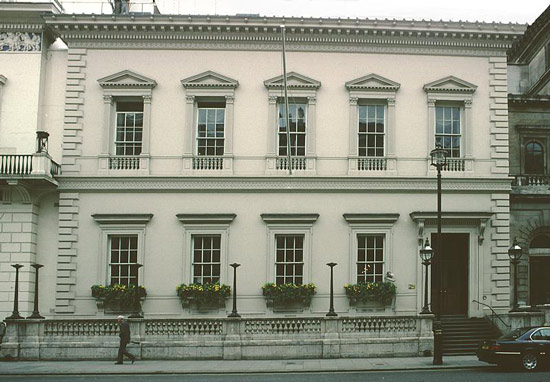That’s my fun day: Sunday supper
For anyone in school or holding a job, or anyone with a memory of solitary studies or salaried servitude, Sunday evening may evoke an involuntary anxiety even years after the fact of unwelcome examinations or inhumane employers. Sunday night may evoke an atavistic anxiety even for people who like or liked their school or their work.
In a recent interview with The Guardian, Ian Rankin, a writer who does not punch a clock, divulged his worst Sunday habit: “Worrying about Monday.” Something about Sunday amplifies the terror of the blank page or incomplete novel. (Segalov)
2. Chasing the blues.
Rosie Sykes understands. “As the weekend winds down into non-existence,” she writes, “many of us begin to contemplate the impending horrors that Monday morning will bring.” In attitude brisk but not brusque, she refuses to sacrifice Sunday night to the demons of Monday morning and urges her reader to follow suit. Her vehicle of redemption is food.
“But this is a choice, a social construct dictated by empty streets, empty pubs and closed curtains. You could resign yourself to yet another humdrum Sunday supper, but you could just as easily embrace the moment as an opportunity to create something that’s not only comforting, but also uplifting.”
Sykes has offered “a welcome antidote to that Sunday night feeling” intended to “extend the joys of the weekend, if you will.” The antidote is her Sunday Night Book. (Sykes 11)
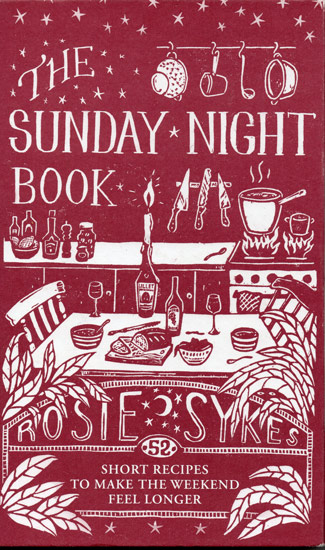
3. Good company along the way.
She has taken a culinary tour that itself sounds joyous in terms both of people and place. She worked with the legendary Joyce Molyneux, who remains her “greatest inspiration,” at the legendary Carved Angel in Dartmouth, as pathbreaking and influential in the United Kingdom as Alice Waters and Chez Panisse in the United States. (Sykes 120)
Later she baked for Tim Hayward at Fitzbillies, the iconic Cambridge institution beloved of Stephen Fry and other luminaries. There Hayward introduced her to the idiosyncratic and irascible Robin McDouall in the form of his minimalist Clubland Cooking.
McDouall is a fascinating if mostly forgotten figure who rose to the rank of Wing Commander in the RAF during World War II before becoming secretary, that is, major domo, at the famed Travellers Club in Pall Mall. He published a clutch of cookbooks in addition to Clubland, served as travel editor at the Glasgow Herald and food columnist at Harper’s Bazaar as well as contributed essays to a number of other publications including The Spectator.
Travellers has enjoyed a colorful cast of members, among them a Lieutenant Colonel William Leake, “who surveyed the Nile… and bought his future bride in the Cairo slave market.” Another explorer, Francis Younghusband, “was appointed Commissioner to Tibet by Lord Curzon.” Younghusband “secured a peace treaty with the locals, which was repudiated by the Foreign Office, earning him both a knighthood and an official reprimand.”
Travellers Club
Two prime ministers, Aberdeen and Palmerston, belonged to the club, long considered “a recreation for politicians at the end of a hard day in Parliament.” The most notable ambassadors who haunted the club have been Talleyrand and the even more rascalous Ribbentrop, “the only member to be hanged.” (Yorke) Among many academics, L.P. Curtis, Jr., legendary editor of the Journal of British Studies and trenchant analyst of affairs Irish, was the most luminous Traveller.
McDouall shone bright as any of them. The professional gossipist Hugh Massingberd recalled him as a “comforting author” and “splendidly camp,” an uninhibited libertine “notorious for remarking of his sexual bouts, ‘I don’t mind paying for it, but he has to be a gent.’” (Massingberd)
McDouall managed the kitchen at Travellers along with the club itself. James Yorke describes the secretary as charismatic if, however, hardly a skilled manager: “For decades he ran the Club with great flair but sadly he often turned a blind eye to structural problems and tried to pretend that the newly introduced VAT simply did not exist. By the time of his retirement in 1975, the Club’s finances were in a parlous state…. ” (Yorke)
4. On to Cambridge and victory, or: It comes in pints!
Starting in 2015 Sykes became ‘development chef’ at precocious Pint Shop, in Cambridge, England, where she essentially is responsible for designing the menu. That, the Shop, its array of craft beers and engaging multinational staff themselves pack the power to defeat the demons of Sunday or any other day.
Sykes now has given us a shot at victory in the domestic kitchen. One of her most powerful weapons is a cheerful but neither chirpy nor cloying voice. “This,” she says of her Trainwreck cocktail, “will either cause an incident or revive those at the scene.” (Sykes 114)
Where a friend lives in Austin, the island of decency in gunsoaked Texas, “the Mexican food is a very different beast from the watered-down version we tend to get in the UK--super tasty and pretty naughty.” (Sykes 68)
Another friend, in Cambridgeshire, grows the best asparagus but regularly threatens to retire. “When he does,” she laments “I will be quite bereft,” noting also that she ‘flatly refuses’ to eat the vegetable out of its short traditional season from “St. George’s Day, 23 April, to the end of May.” That provokes a sort of parenthetical warning: “(I’m telling you this because some growers seem to be popping it out in February these days, and I find it all most sinister)” as, of course, she should. (Sykes 66)
Elsewhere Sykes discusses her fondness for morcilla, the Spanish blood sausage also beloved of McDouall, and its “really good hum of nutmeg.” (Sykes 62)
5. A keeper of the midcentury torch.
Sykes wears the erudition lightly and in general understands the historic nomenclature of the English kitchen but does not quite know her McDouall. She claims her ‘Croute Windsor’ comes from his Clubland Cooking, a somewhat eccentric and decidedly minimalist period piece laced with wry humor and pronounced prejudices, in other words an exceptional artifact and practical guide.
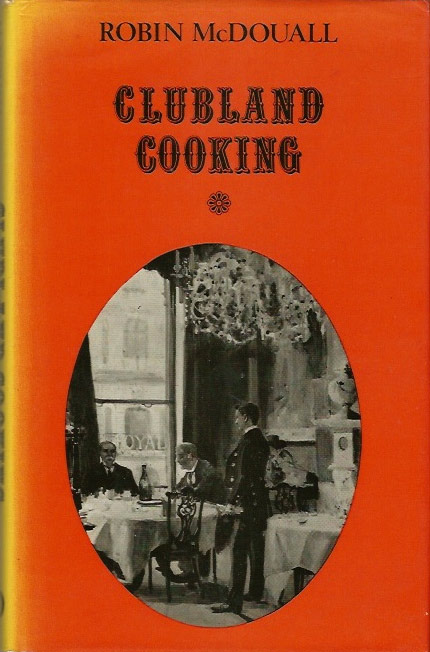
The McDouall preparation, which he calls a canapé, not a croute, consists solely of two ounces minced ham mixed with a little Port and heavy cream, then hidden under (yes, beneath) “one large grilled mushroom.” Other than ham and mushroom, the Sykes version has nothing in common with its putative model. Sykes fries thick slices of the ham and mushroom in olive oil together, then reduces ‘a splash of Sherry’ or lemon juice before adding crème fraiche and chives. The combination is served over toast instead of under the mushroom, a sensible enough complication and a good one, but not McDouall’s.
In common with McDouall however Sykes does describe leftovers as “remains,” which he explains “they used still more discouragingly to be called” in a Spectator column from 1957. (“CZ-Gilt”)
The redoubtable Dorothy Hartley, both ahead of and far, far behind her time in 1954, would appear to be a hidden reference. Both women call porcini, or ceps, “penny buns,” their ancient English name. Hartley describes how the mushroom got its name: “It is so exactly like a glossy penny bun, that any other description seems superfluous. Even the texture is bun-like…. In woods,… a sweep of boletus, looking like someone had tipped a basketful of penny buns out onto the emerald autumn grass, is a joyous sight.” (Hartley 301-02)
The name of bun and fungus has withstood the dislocation of inflation: McDouall reports that by the fifties the actual cost of the baked good already had risen to thruppence.
6. Tripartite balance.
The food that emerges from The Sunday Night Book is not quite fast, not quite comfort and not quite as simple as the subtitle on the cover claims, a fact that partially excuses the sloppy editor who omitted the adjective from the title page within.
The recipes combine appealing elements of all three genres. They draw from all manner of cuisines and are varied enough to make the little book versatile and interesting. Unlike her counterparts at The New York Times, Sykes has no reluctance to publicize British dishes and, happily enough, includes a lot of them, good ones, in The Sunday Night Book.
7. Britain in her kitchen.
Her Quick Soused Mackerel (“When I say quick I don’t mean immediate…. ”) is a creditable rendition of the classic accompanied by an accessible recipe for making fresh pickle of chicory, cucumber, kohlrabi and red onion; Caerphilly with Leeks and Mustard is, as she claims, “a sort of less cheesy, more substantial Welsh rarebit [sic],” her evocation of the cheese as “citrusy” remarkably good. (Sykes 76, 14)
There is cabbage, neither green nor Savoy but cavolo nero, with equally black pudding; a lively spiced rice and lentils that “can also become a speedy kedgeree” and the macaroni and cauliflower cheese combining a pair of British constants. (Sykes 28)
When stealing steal from the best and Sykes cheerfully admits to stealing with only a tweak or two a Fergus Henderson standby, the quintessentially English anchovy toast with parsley salad.
“I have always,” Sykes insists, “been a great patron of the leftover,” and it shows. Her chapter called “Remains of the Day” is strong: Bubble and squeak; dripping on toast; lamb and barley; the London cassoulet; each of sufficient quality to prepare from scratch.
Also eggs. A mangle of “Eggs in a mortar in Pestle,” baked with mushrooms, scrambled with black pudding, best of all perhaps “Coddled Egg Ivanhoe” cribbed from the kitchens of clubland traditionally built around smoked haddock or, the variation properly favored by Sykes, “super-decadent smoked eel,” are ideal Sunday suppers, simple and comforting enough for the most hungover cook or consumer.
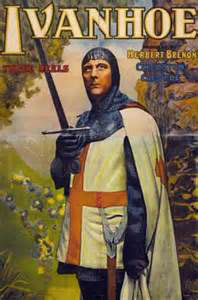
Here and there Sykes’ history as a professional chef leads her to assume that most of us will have something to hand that we will not. “Brown Shrimps with Whisky” she describes as “so simple and pretty heavenly,” almost akin in its ease to “toast and jam.” It is not, relying as it does on a ready supply of potted shrimp, an item that takes a fair amount of time and some knowledge of technique to prepare. The instruction to use it as a finished ingredient without providing a recipe is something like the apocryphal instruction to ‘first catch your hare’ misattributed to Mrs. Glasse (but see the Note).
Sykes may have a noble culinary pedigree but she is no snob. At times, she confesses, she wants to slather her food “with nothing more than some trusty tomato ketchup.” (Sykes 96)
Not all the recipes are ideal. Devils by their nature ought not be timid, but Sykes’ are somewhat shy. The basic recipe for devilling chicken livers is sound, however, so all you need do is boost the amount of extant seasoning. Meanwhile Sykes knows to serve them on the essential toast with the essential watercress. To return momentarily to the editing however, nothing excuses the placement of so many recipes based on toast outside its chapter and while Sykes claims cream for her favorite ingredient in fact she often opens a bucket of crème fraiche instead.
These are but cavils. The Sunday Night Book fulfills its stated purpose, but also offers a lot more, recipes for the most part thoughtfully constructed, simple enough for a busy night and elegant enough for an occasion. It would be a shame to curtail its use to the day of dread. The bookhas a charming cover and includes three flights of excellent color plates.
8. Simple pleasures with a few nonfatal flaws.
Lucinda Scala Quinn, who unfortunately shills for QVC to extend her “Mad Hungry” brand, lacks the lyricism or sophistication of Sykes. Sunday Suppers is the linoleum floor to the Persian carpet unrolled by Sykes, a practical if not elegant effort that offers a number of simple, homely dishes straightforward enough for any novice. While the book is even shorter than The Sunday Night Book, only 96 pages of recipes, it is one of the better bargains at only thirteen bucks because none of them bombs other than the inevitable kale salad.
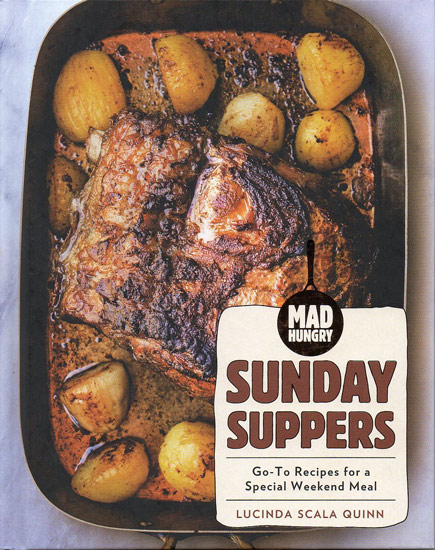
The cast of Sunday Suppers is less cosmopolitan than The Sunday Night Book. Most of the recipes derive from either European or North American models and, surprise from an American author, a number of British ones make the cut including chicken tikka masala, which Quinn, no scholar, misreads as “the most famous of all Indian dishes” notwithstanding its origin in the British Midlands.
In fatuous and contradictory mode, she goes on to claim that the straightforward preparation “constitutes an entire food genre all its own” and that her own recipe “takes inspiration from several traditional dishes and turns it [sic] into one delicious hybrid.” Not that it is not good, but in fact her tikka is as conventional as tikka gets. (Quinn 22)
Quinn almost manages not to mistake shepherd’s for cottage pie by specifying lamb for the base before giving her reader the options of lamb with beef or beef alone. In either incarnation, however, like the tikka her shepherds’ or cottage pie, or their hybrid, is sound.
It is not particularly British--just about all cultures spatchcock birds--but the recipe, prosaically described as “flat roast chicken” offers good guidance to the novice and its handful of “riffs,” essentially seasoning shifts, is welcome. So is the decidedly nonBritish recipe for a lost miracle, Boston Cream Pie which, an example of New England eccentricity, is a cake. None of the other desserts is British either, notwithstanding the claim for crumble Pete Brown makes with feeble conviction, a considerable oversight given the fact that the category is the only aspect of British cuisine much admired beyond the archipelago.
To return to British foodways, Quinn includes a good preparation for a Somerset standby, pork chops paired with apples and onions. It would be better if Quinn started with lard instead of olive oil, not a fast friend of the apple, deglazed the pan with apple brandy or apple jack before saucing the dish with some sage (she adds no herb) and the hard cider that is an afterthought in her ingredient list instead of the beer, white wine, chicken broth or water she recommends in the subtitle of the recipe.
9. The (incognito) roast beef of old England.
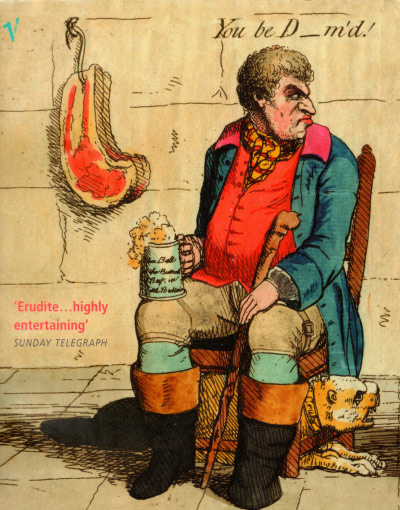
The standing rib roast from Sunday Suppers may not match the perfection presented by the great Jane Grigson in English Food but is a worthy runnerup. The dry rub of powdered mustard, preferably the Colman’s she does not name, pepper, salt and sugar produces a crisp savory crust.
Her simple technique for “Killer Gravy” does indeed kill, banishing lumps as it will by combining “½ cup (120ml) beef broth and ¾ cup (33g) all purpose flour in a lidded jar.” Quinn might have added that the broth should be hot and the flour Wondra. Anyway shake them up, then whisk the thickened stock into the roasting pan, deglazing as you go until the base thickens and bubbles before slowly pouring on another quart or liter of hot stock. (Quinn 47) Quinn does not identify roast beef as British.
Of course Betty Rosbottom also includes roast beef in Sunday Roasts. Her book is aimed direct at a stranger to the kitchen. It is by turns reassuring and exasperating. “Roasting is an easy technique to master.” Well, not quite. Especially when it comes to a costly rack of beef or heirloom turkey, the tendency to overcook, and ruin, the roast is a commonplace. Roasting things like that requires intuition and touch: Even the most expensive instant thermometers underreport the overdone.
Rosbottom also appears to assume her reader is near illiterate. “The word roast,” she believes she must explain, “is both a noun and a verb.” She then answers the rhetorical question “So what constitutes a roast?” If you do not know, do not ignite the oven.
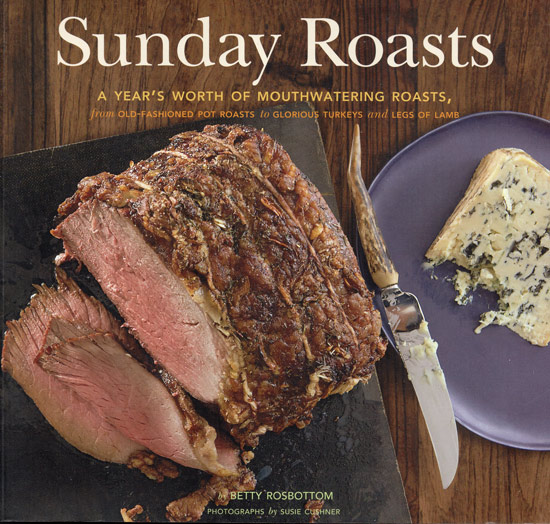
Once past the instructional primer Sunday Roasts harbors some decent recipes. Unlike Sykes or Quinn, who seek to soothe the cook and smooth her process, Rosbottom presents the occasional recipe, that is, the recipe for a biggish occasion. Geared to the novice they are, but also time consuming and sometimes multipart. All of them are for roasting (the verb), many for roasts (the noun) and although she never says so, many of those British, which should be inevitable given the parameters of the cuisine.
Rosbottom certainly assumes her reader has no knowledge whatsoever of Britain or its foodways. She describes Yorkshire pudding in detail, then teaches some geography: “The Yorkshire in the name is for one of England’s northern counties where this pudding originated.” (Rosbottom 156) Such is the nature of education in America, where more students are versed in the politics of putative grievance than with western history or its canon.
Three variations on roast beef appear in Rosbottom’s book, along with a raft of other British preparations from Brussels sprouts, apples and bacon; ham glazed with marmalade; a rack of pork seasoned with curry and topped by apple chutney; three chutneys in all; pork with blue cheese (but she should specify Stilton or Stichelton) and pears; “Mini Wellingtons;” salmon with peas and watercress; and cider roast turkey to orange infused lamb with compound butter.
10. All that’s old is new again, again.
This last, the cooking of lamb or mutton flavored with orange, dates at least to the seventeenth century in England. Ivan Day, a food historian and historical cook, injects sour Seville orange peel into a leg of mutton with a larding needle and roasts it on a spit. He and a number of sources including the London Telegraph and Sydney Morning Herald attribute the technique to Robert May, author of The Accomplish’t Cook, which survives as probably the best known of seventeenth century English cookbooks.
Their recipes are not quite May’s but his ancestry is apparent. He does flavor mutton with orange, along with either spice or herbs instead, like Day, of the orange alone. May starts with a chine, or back ribs, instead of the leg and like Day lards the cut, in the seventeenth century case “with lard, or lemon peel cut like lard, or with orange-peel” and punctures the meat with clove, “or in place of cloves, tops of rosemary, tyme, sage, winter-savory or sweet marjoram.” Then the chine gets a basting of butter and goes onto the spit.
May offers further evidence that when Elizabeth David insisted on the historical absence of garlic from the English kitchen she had simply made up the jibe. His sauce for mutton roasted with orange is made “ ….with mutton-gravy, and nutmeg, boil it up with a little claret and the juyce of an orange, and rub the dish you put it in with a clove of garlick.”
“Or,” he suggests,
“make a sauce with pickled or green cucumbers slic’t and boil’d in strong broth or gravy; with some slic’t onions, an anchove or two, and some grated nutmeg, stew them well together, and serve the mutton with it hot.” (May 139; spelling and punctuation obviously as the original)
Two exemplary sauces from the cusp of medieval and early modern techniques, worthy of revival along with the citrus scented lamb.
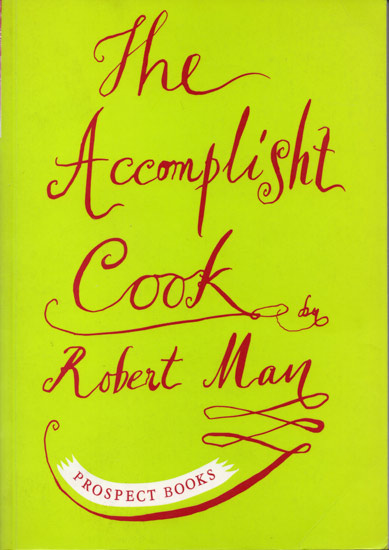
Note:
-To be fair, tubs of potted shrimp may be found for sale at some times and places in the United Kingdom; never in the United States.
Sources:
Lizzie Boyd, British Cookery: A Complete Guide to Practice in the British Isles (Woodstock NY 1974)
Dorothy Hartley, Food in England (London 1954)
Robin McDouall, Clubland Cooking (London 1974)
Hugh Massingberd, Daydream Believer: Confessions of a hero-worshipper (London 2012)
Robert May, The Accomplish’t Cook, or the Art & Mystery of Cookery (orig. publ. 1660; Prospect Books facsimile of the 1685 edition, Totnes, Devon 2000)
Lucinda Scala Quinn, Mad Hungry Sunday Suppers (2019)
Betty Rosbottom, Sunday Roasts: A Year’s Worth of Mouthwatering Roasts (San Francisco 2011)
Michael Segalov, “Sunday with Ian Rankin: ‘I always worry when I start writing it’ll be no good,’” The Guardian (11 August 2019)
Rosie Sykes, “My Kitchen: Food writer Rosie Sykes,” The Guardian (3 March 2015)
The Sunday Night Book: 52 Short Recipes to Make the Weekend Feel Longer (London 2017)
James Yorke, “Home at last--a celebration of 200 years of the Travellers Club,” the Spectator (September 2018)


